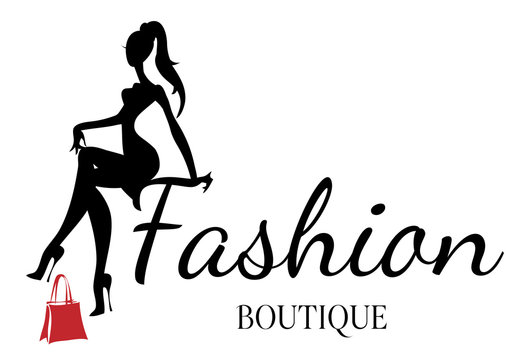Why Boutique Fashion is the Ultimate Choice for Special Design
Why Boutique Fashion is the Ultimate Choice for Special Design
Blog Article
A Deep Dive Into the World of High-Fashion Runways: Understanding Clothing as Art
High-fashion paths have actually become fields where clothes transcends its practical origins, progressing into an innovative kind of creative expression. Developers, just like masterful musicians, weave elaborate narratives with textile, shade, and type, challenging conventional norms and redefining charm requirements. These programs are greater than plain displays; they are immersive experiences, where every stitch and seam tells a tale rich with cultural value and progressive development. As we explore these sartorial spectacles, we must ponder: what function does style play fit social worths, and just how does it mirror the ever-changing tapestry of human feeling and identity?
The Development of Runway Shows
The trajectory of path shows has transformed dramatically over the decades, progressing from exclusive industry events to exciting spectacles that blend style with art. Traditionally, path programs made love affairs, kept in ateliers or small places, mostly participated in by customers and industry experts. These early discussions concentrated on the garments' workmanship and business viability, supplying a practical and direct screen of seasonal collections.
As the style sector increased, the nature of runway programs started to transform. The 1970s and 1980s marked a turning factor, with developers seeking to distinguish themselves through even more staged discussions.
Recently, technology and social networks have even more transformed runway shows, making them obtainable to an international audience. Livestreaming and electronic platforms have equalized style, allowing fanatics worldwide to witness these events in real-time (boutique fashion). This development reflects a broader cultural change, where high-fashion runways work as a dynamic intersection of advancement, style, and performance
Designers as Enthusiast Artists
Designers in the high-fashion market have actually obscured the lines in between useful garment development and the theoretical realm of art. By embracing artistic techniques such as sculpture, paint, and avant-garde installments, developers craft garments that test typical fashion standards and boost them to art kinds.
Visionary developers draw ideas from a myriad of sources, consisting of abstract art, historical recommendations, and personal narratives. They have an one-of-a-kind capacity to imagine and appear concepts that push the borders of standard fashion, typically redefining visual paradigms in the process. This imaginative resourcefulness is showcased with dramatic shapes, ingenious materials, and detailed workmanship, which welcome customers to experience fashion as greater than just wearable items.
Furthermore, the path works as a canvas for these musicians, where illumination, music, and set layout coalesce to develop immersive experiences. These presentations are not just displays of apparel however are orchestrated efficiencies that stimulate emotion and provoke thought, affirming the developer's function as a true artist in the contemporary social landscape.
Social Influences in Style
Cultural tapestry weaves its intricate patterns right into the textile of fashion, affecting developers globally. The vibrant interchange of social tales, traditions, and signs informs and inspires collections that poise high-fashion paths.
The influence of culture on style is typically seen in the reinterpretation of standard garments and patterns. The usage of Japanese kimonos, Indian saris, or African prints in modern fashion mirrors a mix of cultural credibility and modern-day looks. Developers such as Valentino's Pierpaolo Piccioli and Alexander McQueen's Sarah Burton have been known to include abundant cultural motifs into their couture collections, equating history right into wearable art.

Innovation in Fabric and Style
Advancement in fabric and layout constantly reshapes the landscape of high-fashion, pressing borders and redefining possibilities. Developers are increasingly checking out the integration of technology, such as 3D printing, which permits for the production this page of complicated frameworks that were previously unbelievable.
Furthermore, sustainability has come to be a critical theme in fabric advancement. The apparel industry is seeing a rise in the use of environment-friendly products, originated from recycled plastics, natural fibers, and even eco-friendly elements. These developments not just supply brand-new textures and visual appeals but also address critical environmental concerns. Designers are embracing these products to craft garments that are both visually striking and conscious of their environmental impact.
In terms of style, avant-garde silhouettes and experimental forms are continually revolutionizing the path. By including sophisticated techniques and unusual materials, developers cultivate garments that blur the line in between fashion and art, establishing new requirements for imagination and expression in the high-fashion round.
Impact of Style on Culture
Fashion wields an extensive impact on culture, serving as both a representation of cultural identification and a stimulant for social change (boutique fashion). With its advancement, style has mirrored societal changes, encapsulating the zeitgeist of different periods.
Additionally, fashion has the power to bridge cultural spaces, promoting understanding and admiration amongst varied teams. As globalisation accelerates, the cross-cultural exchange of try here fashion ideas becomes progressively considerable, advertising inclusivity and diversity. The rise of streetwear, originating from city subcultures, illustrates just how fashion can transcend socio-economic borders, providing individuals a method of self-expression and empowerment.
Essentially, fashion is not merely regarding aesthetic appeals; it is a vibrant pressure that influences values, perspectives, and societal progress (boutique fashion). By continually engaging with social and cultural currents, fashion remains an essential part of the cumulative human experience

Final Thought
Designers, similar to visionary artists, orchestrate collections that show identity, emotion, and social stories, challenging conventional aesthetics. This junction of fashion and creativity not only captivates audiences worldwide but additionally affects societal perceptions and advertises a deeper appreciation for cultural diversity.

Cultural tapestry weaves its elaborate patterns right into the material of style, influencing developers around the world.Style possesses an extensive impact on society, serving as both a representation of cultural identity and a stimulant for social adjustment.
Report this page